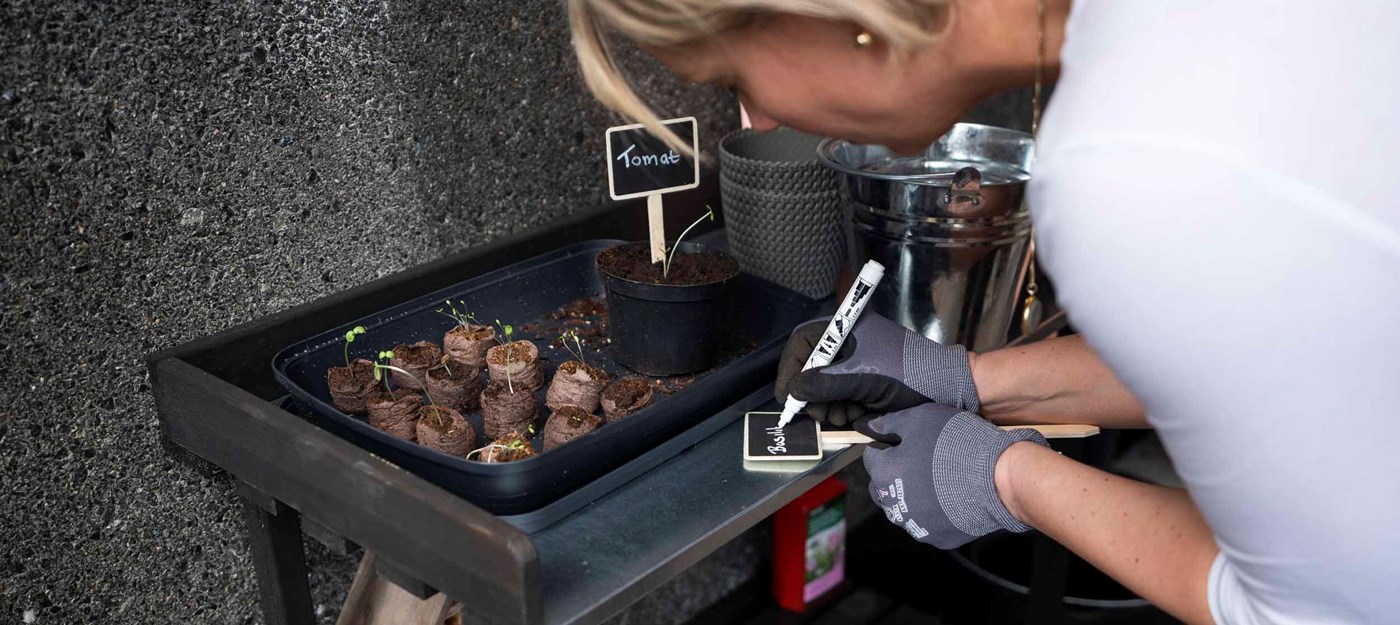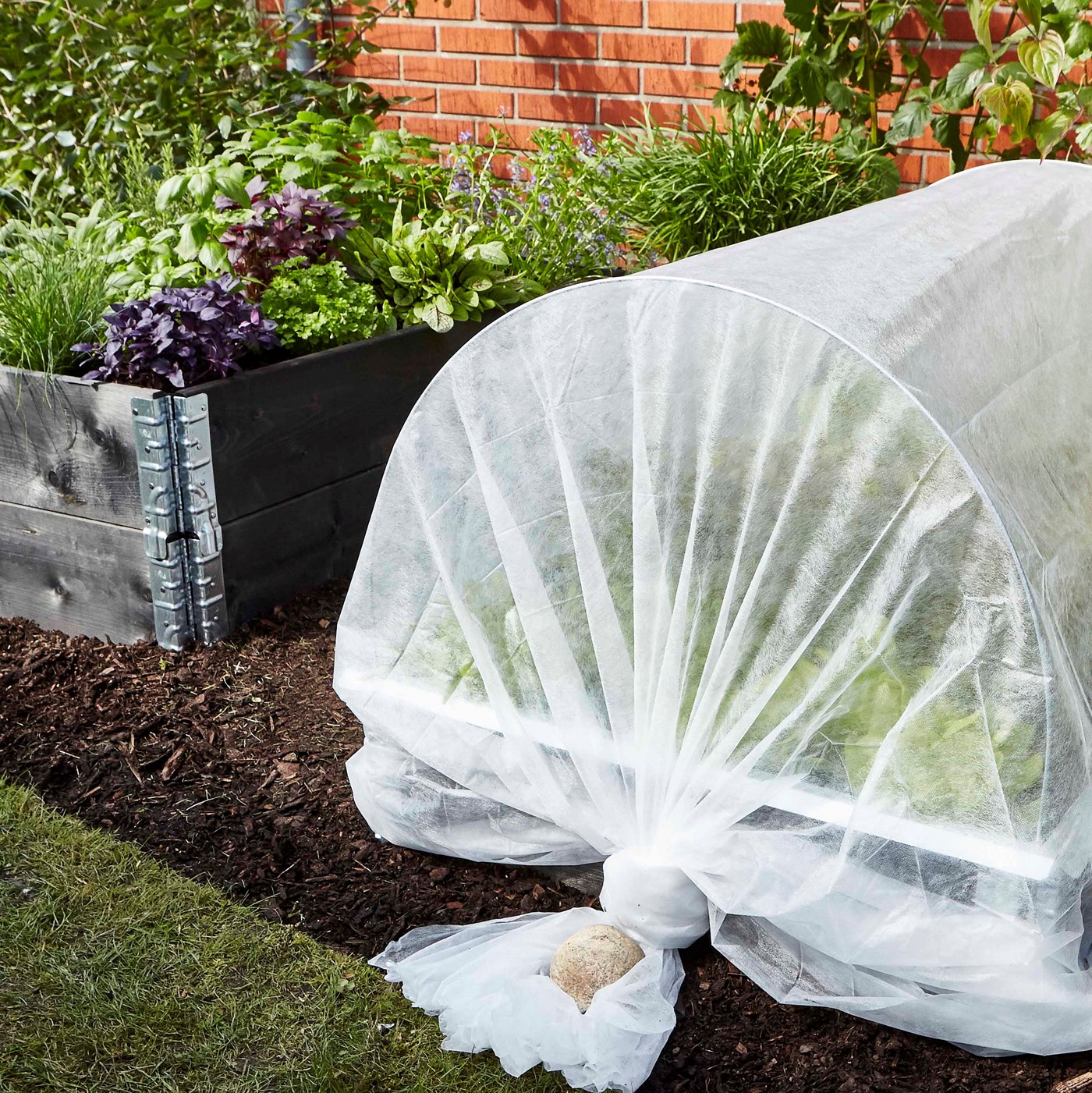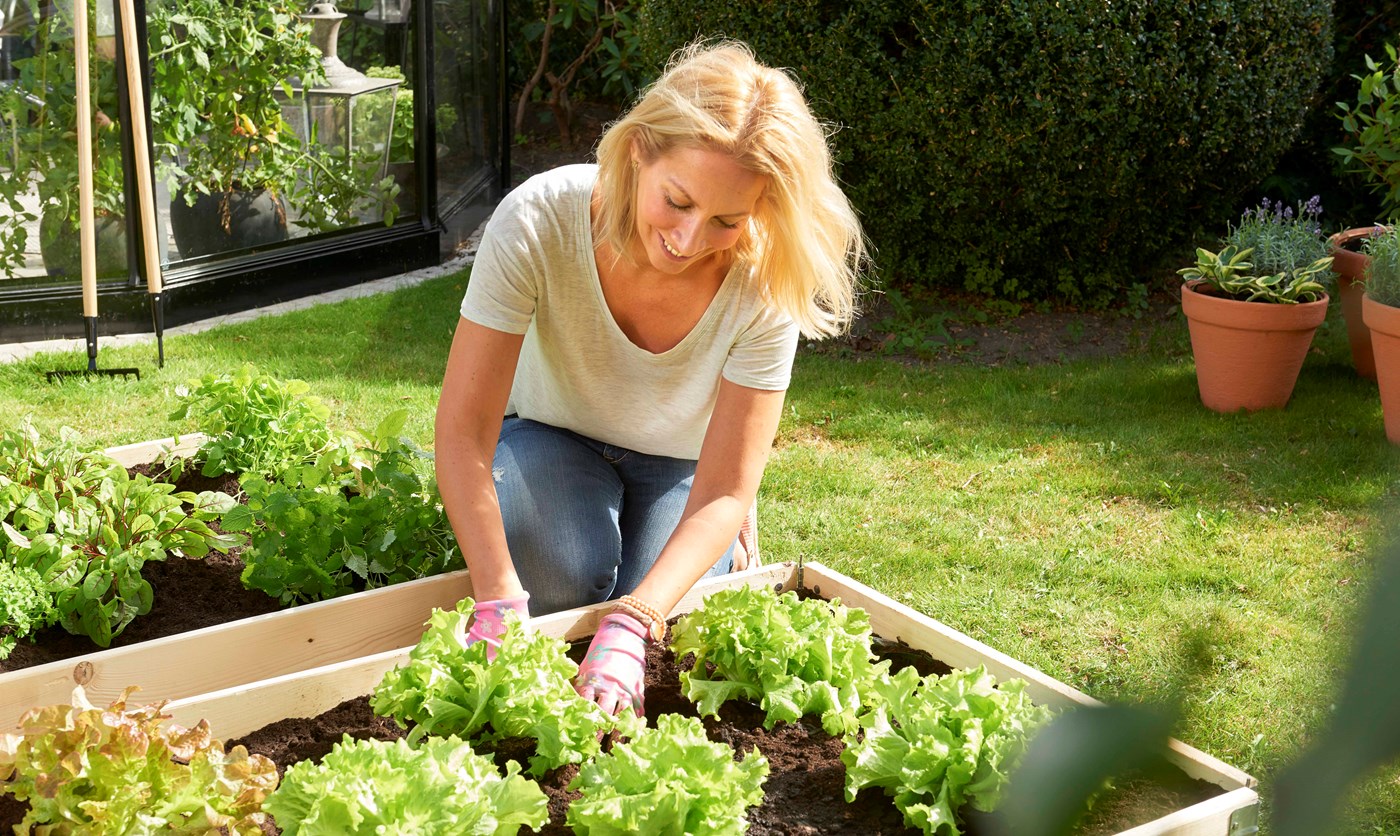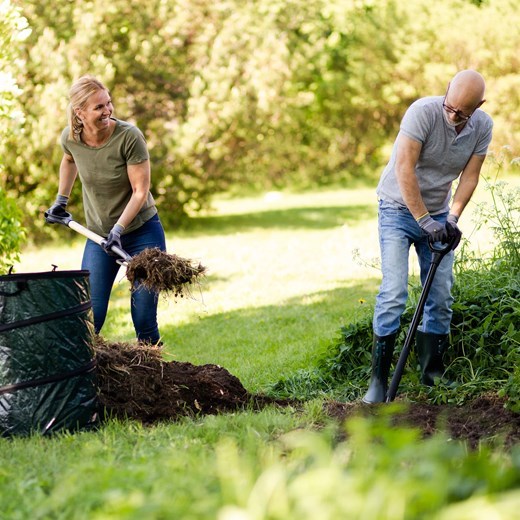Plant Seeds – Grow Lush Flowers and Tasty Veggies!
With the seeds in our range, you will be able to turn your garden or balcony into a lush, fragrant, and flavourful oasis. Home horticulture is a popular hobby, and you don’t need to be an experienced gardener to succeed. With our seeds, almost anyone can create a thriving vegetable garden and a colourful flowerbed, as long as you give the seeds and plants some time and love.
Plan your planting site
No matter if you have a garden or just a balcony, there is always room for planting and gardening. Before you start sowing the seeds, consider what type of plants are best suited for your environment. In sunny areas, you can opt for plants that need a lot of sunlight, while shady spots can be perfect for herbs that thrive in partial shade. Make sure your planting site has enough drainage, and choose the right soil to promote optimal growth depending on the plants you choose.
Seeds at Biltema
In our range you will find a variety of seeds for growing herbs, vegetables, and flowers. You are only limited by your imagination (and weather, location, and preparation) in terms of what you can grow and harvest for the summer.
Our range of seeds includes:
- Chives
- Chili
- Parsley
- Dill
- Spring onions
- Carrots
- Sugar snap peas
- Tomatoes
- Corn
- Radishes
- Salad
- Nasturtium
- Spinach
- Summer flowers
- Sunflowers
Grow flavourful herbs and spices
Growing your own herbs and spices is easy, and they can be planted in almost anything, as long as there is drainage. So, you can grow herbs in pots, planter boxes, or flowerbeds, as long as you have the right soil and the right sun and watering conditions. Herbs like porous soil, and depending on which you plant, they need different amounts of sun and shade. Parsley, for example, thrives well in the shade, while chili peppers like it sunny. Read more on the seed packets about where to plant them.
Our range of herbs and spices includes:
- Chives
- Chili
- Flat-leaf parsley
- Dill
- Basil
- Oregano
Planting herbs
In addition to providing you with flavourful herbs for your food or salad, herbs that are allowed to flower often attract butterflies, bumblebees, and honeybees, which are useful for many of your garden plants and crops.
How to plant herbs
Planting herbs is not difficult.
- Start by deciding where you want to plant them. Shady or sunny? In a pot or planter box?
- Fill with fresh seeding soil, preferably porous soil.
- The seeds should then be planted shallow, just under the surface.
- Moisten the soil with a water sprayer.
- Then it’s just a matter of waiting until the herbs have grown and are ready to be harvested.
Growing crispy vegetables
There is something very special about eating homegrown vegetables picked straight from the garden. Depending on the vegetables you choose to grow, different amounts of preparation and time are required. Sugar snap peas, spinach, lettuce, radishes, and carrots are vegetables that are easy to grow and usually produce a quick and consistent harvest.
Our range of vegetable seeds includes:
- Spring onions
- Carrots
- Sugar snap peas
- Micro dwarf tomatoes
- Tomatoes
- Corn
- Radishes
- Iceberg lettuce
- Garden cress
- Cress
- Spinach
When should you sow your vegetable seeds?
Most people choose to sow vegetable seeds directly in the soil at the grow site during April, May, and June. You can, in fact, start sowing your vegetables as soon as the soil temperature is at least 5 degrees above zero.
Direct sowing during the summer
Fast-growing vegetables, such as lettuce, radishes, and sugar snap peas, can be sown in batches throughout the summer. This allows you to harvest vegetables in batches all summer long, and not all vegetables will be ready for harvest at the same time.
How to sow and plant vegetables
- Start by preparing the soil for sowing. Add fertiliser and soil improver if necessary. Top the soil with some sand-mixed soil tin which you will sow the seeds.
- Sow your seeds in rows and at appropriate distances, so that they don’t grow into each other once they start to sprout.
- Water the seeds and make sure they are kept slightly moist at all times, until they begin to sprout. Until the seeds have taken root, you need to water carefully, so a tip is to use a water sprayer with a gentle spray.
- Should frost suddenly appear in spring or autumn, it is important that you protect your crops with a fibre cloth or plant cloth.
- Fertilise! When the vegetables start to grow, they should be given the right nutrients regularly, such as cow manure, chicken manure, or other liquid plant food.
Grow colourful flowers
With colourful flowers in your flowerbeds, pallet collars, or pots, your home and patio will immediately feel cosier, more summery, and more homely. It may be a good idea to pre-seed your flower seeds indoors before the outdoor climate is warm enough. By pre-seeding, your flowers will have already had time to grow a little by the time the warmer weather arrives and you can move your little plants outdoors. Not all flowers need to be pre-seeded indoors, some thrive best when planted directly outdoors. Therefore, always check the instructions for each seed variety you buy.
Our range of flower seeds includes:
- Mix, summer flowers
- Marigolds
- Sunflowers
- Sweet peas.
Pre-seed your flower seeds
It is usually stated on the seed packet when the seeds should be started, or how many weeks it takes from sowing the seeds until they are ready for planting. Be sure that will be no more frost before planting the outdoors.
What should I sow my seeds in?
You can pre-seed your seeds in pots, cans, old milk cartons, boxes, and containers, for example. You can also buy small pots or mini greenhouses if you prefer. There is no right or wrong here, but the most important thing is that your seeds get the right conditions regarding soil, water, and sunlight.
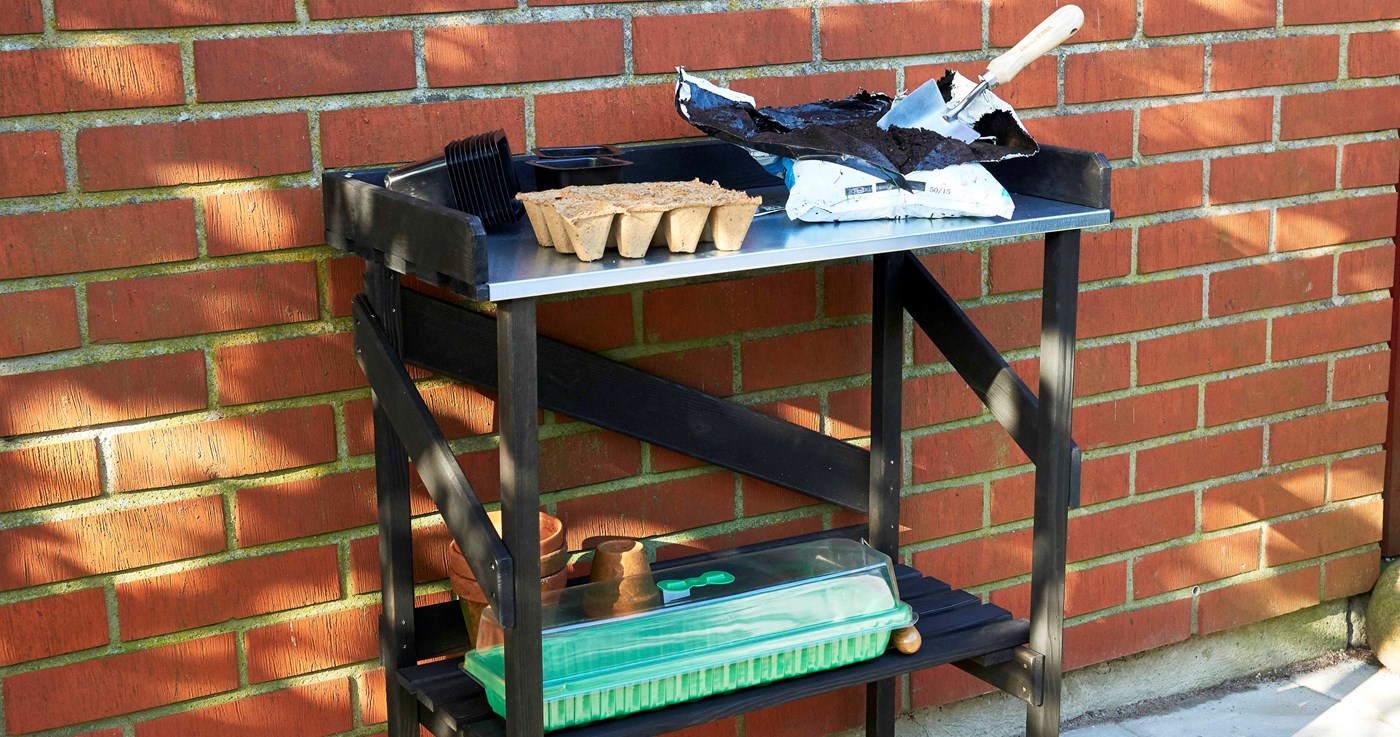
How to plant flower seeds
- Start by filling the pots, mini greenhouse, or whatever you have chosen to plant in, with seeding soil. Make sure that the soil is fairly compacted.
- Sow the seeds sparsely.
- Carefully cover the seeds with soil, until they are no longer visible. If you have bought light-germinating seeds, do not cover them with soil at all. Therefore, always read the package before you start planting.
- Spray water over the sown seeds and cover with plastic, unless you are using a mini greenhouse with a lid. Don’t forget that you need to make small air holes in the plastic so that the seeds get oxygen.
- Don’t forget to label which seeds you plant where, so you can keep track of your different flower types.
Repot the seedlings
When the stem and cotyledon have finally started to sprout, it’s time to transplant your plants into their own pots. You should use humus-rich soil for transplanting, such as compost or potting soil. Place the flowers in partial shade for the first few days and make sure to water as necessary.
Transplanting outdoors
When the plants have grown further and become fully rooted, it’s time to plant them outdoors! Before planting the flowers outdoors, they should be hardened off. Start hardening off about a week before planting the flowers outdoors, usually sometime in May-June. When hardening off, start by placing the flowers in partial shade and protected from the wind.
For the first few days, the flowers should only receive about 2-3 hours of sunlight, which can then increase as the plants get used to it. After 3-4 days, the plants are usually ready to stay outside during the night, as long as there is no risk of frost. Hardening off is then complete and the flowers are ready to be planted where you want them to bloom.

